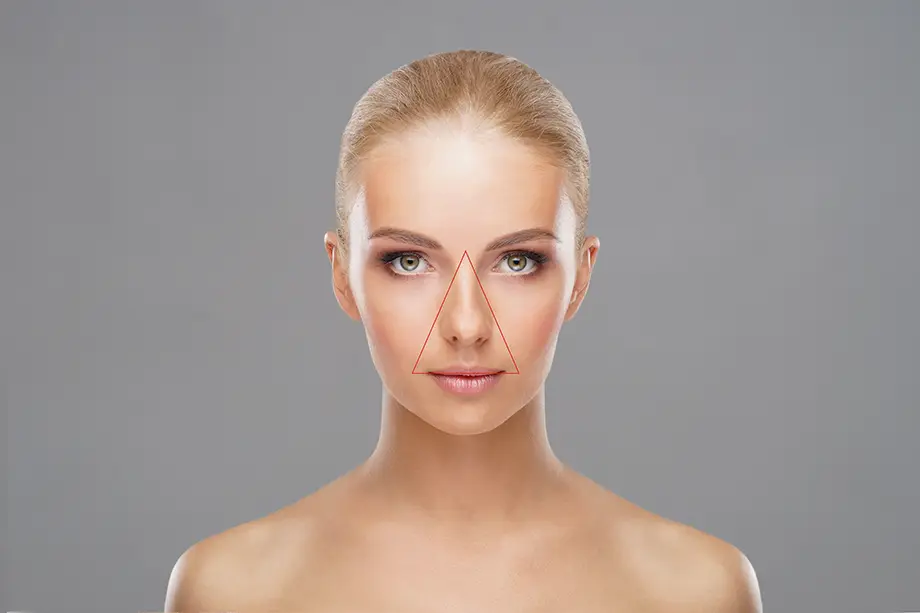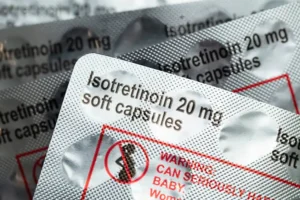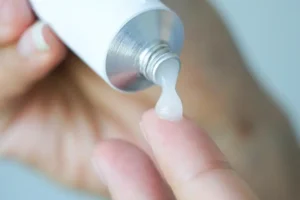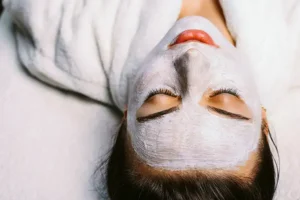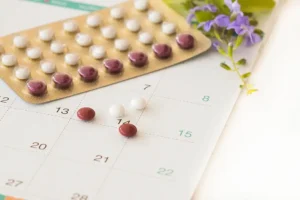It sounds dramatic, but doctors aren’t exaggerating when they warn against popping pimples around your nose or upper lip. This small area, known as the danger triangle of the face, has a direct connection to veins that lead to the brain. A single infected pimple here can, in rare but real cases, turn life-threatening within hours.
This isn’t an internet myth. It’s an anatomical reality supported by decades of clinical evidence and some frightening real-world stories.
What Exactly Is the “Danger Triangle”?
The danger triangle covers the area from the corners of your mouth up to the bridge of your nose. That includes your nose, upper lip, and surrounding folds. Beneath the surface, this region contains a dense network of veins that connect to the cavernous sinus, a hollow space behind your eyes where major blood vessels and nerves meet.
Unlike most veins in your body, the veins in your face don’t have valves. This means blood and bacteria can flow in both directions. If you push bacteria deeper by squeezing a pimple or an ingrown hair here, it can travel inward toward the brain.
When a Pimple Turns Dangerous
If bacteria from an infected pore enter the deeper veins, it can trigger a rare but serious condition called cavernous sinus thrombosis, which is a blood clot inside one of the brain’s major venous sinuses.
The Cleveland Clinic and Mayo Clinic have documented that infections in this area can cause symptoms such as facial swelling, fever, vision problems, or even paralysis of the eye muscles. Without immediate treatment, they can become fatal.
Medical literature also includes documented cases in which infections in the nasolabial “danger triangle” region of the face led to cavernous sinus thrombosis. For example, a case study published on PubMed Central reported a patient who developed a severe infection and septic embolism after draining a facial pimple at home.
What Not to Apply After You’ve Popped a Pimple in This Area
If you’ve already squeezed a pimple here, resist the urge to experiment with home remedies. Some ingredients make the situation worse:
- Aloe vera gels and thick creams can trap bacteria and seal in infection.
- Petroleum jelly or heavy oils block airflow and delay healing.
- Alcohol, hydrogen peroxide, and toothpaste can burn the skin and increase inflammation.
- Acids or exfoliants like glycolic or salicylic acid should be avoided until the area heals.
Instead, gently cleanse with mild soap and water, apply a thin layer of over-the-counter antibiotic ointment, and monitor closely for redness, swelling, or pain. If these symptoms worsen, seek medical help immediately.
How to Treat Pimples in the Danger Triangle Safely
If you get a breakout here, focus on prevention and patience, not pressure.
- Apply a warm compress to reduce swelling and encourage natural drainage.
- Use benzoyl peroxide (2.5–5%) or salicylic acid (0.5–2%) spot treatment once a day.
- Keep the area clean with a gentle, non-comedogenic cleanser.
- Avoid touching, squeezing, or covering with makeup while it heals.
For severe or painful pimples, especially cystic ones, see a dermatologist. They can safely drain lesions using sterile tools and may prescribe topical or oral antibiotics if infection risk is high.
When to Go to the ER
You should seek emergency care if you notice any of the following after popping or irritating a pimple in this region:
- Rapidly spreading swelling
- Intense pain or redness around the nose or eyes
- Fever or chills
- Vision changes or eye swelling
These symptoms can appear within hours and signal that the infection is spreading inward.
Can It Really Be Fatal?
Yes. Before antibiotics were common, deaths from facial infections spreading to the brain were not rare. Today, prompt medical care prevents most fatalities, but the danger is still real. Even one untreated infection can lead to hospitalization if bacteria reach the cavernous sinus.
How to Prevent Breakouts in the First Place
- Wash your face twice daily with a mild, pH-balanced cleanser.
- Avoid thick creams or pore-clogging makeup on and around your nose and upper lip.
- Exfoliate gently once or twice a week with a non-abrasive formula.
- Don’t pick, scratch, or touch pimples anywhere.
- Replace pillowcases and clean your phone screen regularly.
A healthy skin barrier is your best protection against serious infections.
Expert FAQ
Why do pimples around my nose hurt more?
This area has more nerve endings and thicker oil glands, which makes inflammation more painful than in other parts of the face.
Is the danger triangle of the face real or exaggerated?
It’s real. The connection between facial veins and the brain’s venous system is a documented anatomical feature. Serious infections are rare but possible.
Can I use acne patches in the danger triangle area?
Yes, hydrocolloid patches can help protect the area and prevent touching, but avoid patches containing harsh actives until the skin heals.
Can squeezing pimples elsewhere on the face cause the same problem?
Not in the same way. Infections can occur anywhere, but the nose-to-lip region is uniquely connected to the cavernous sinus, which is why it carries more risk.
How long does it take for an infection here to spread?
In rare cases, serious infections can develop within hours, which is why prompt medical attention is essential if symptoms worsen.
The danger triangle of the face isn’t a myth, it’s a medical fact. Infections that start as tiny pimples near your nose or lip can, in rare cases, spread inward and threaten your life. Most people will never experience this, but it’s not worth the risk.
Let pimples heal naturally, avoid popping, and if you ever notice swelling or pain spreading in this area, see a doctor right away. Sometimes what looks like a small blemish is your body warning you to stay hands off.

